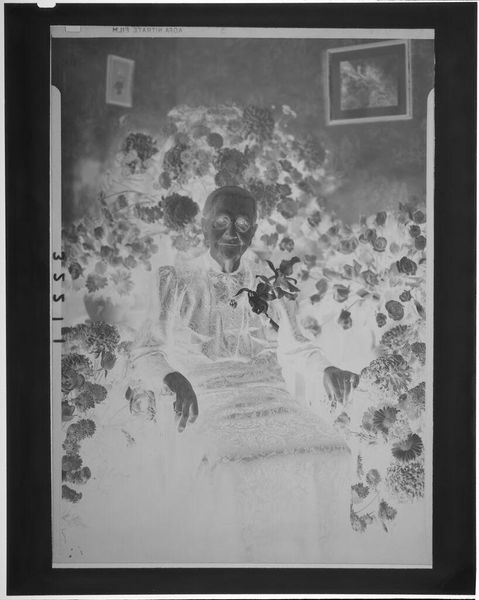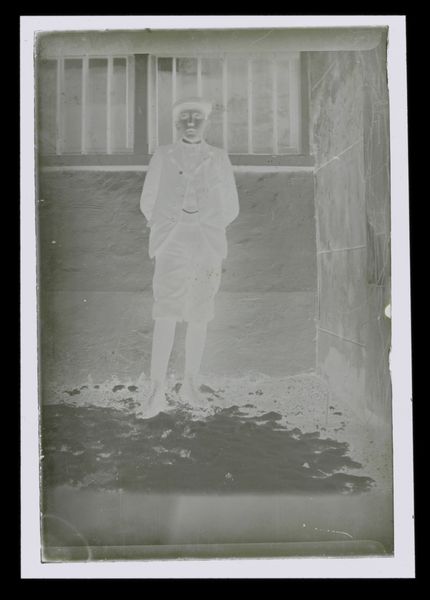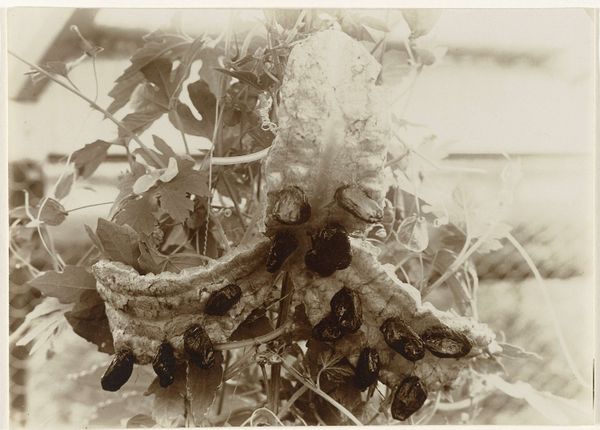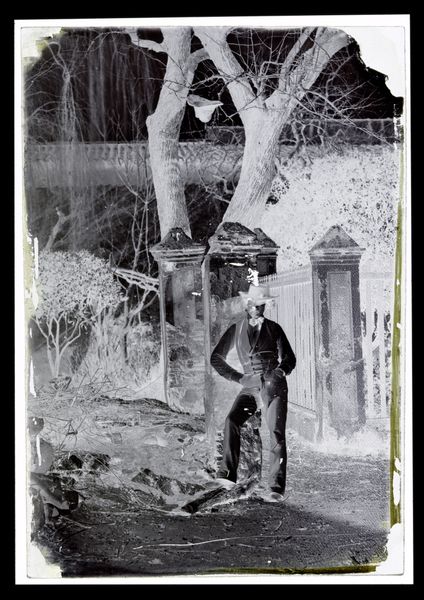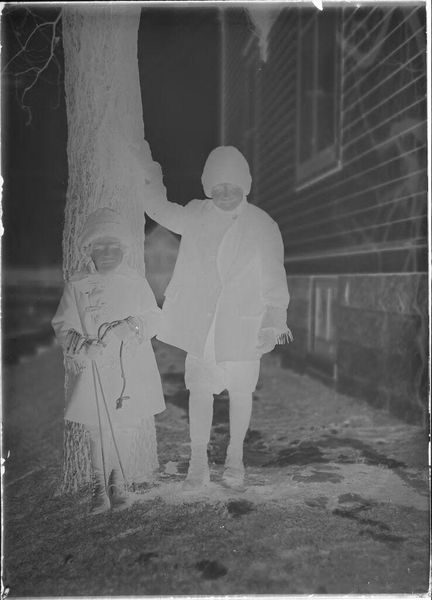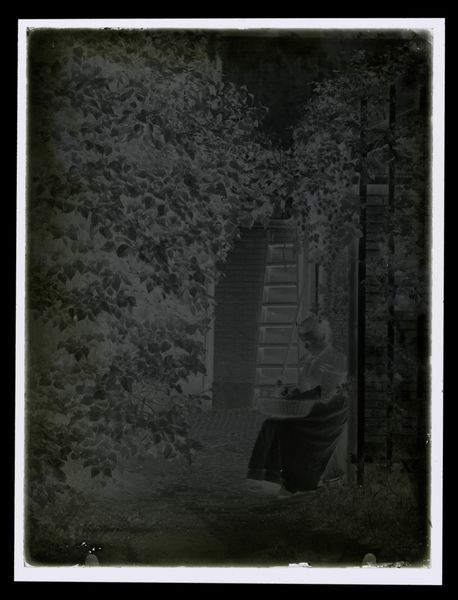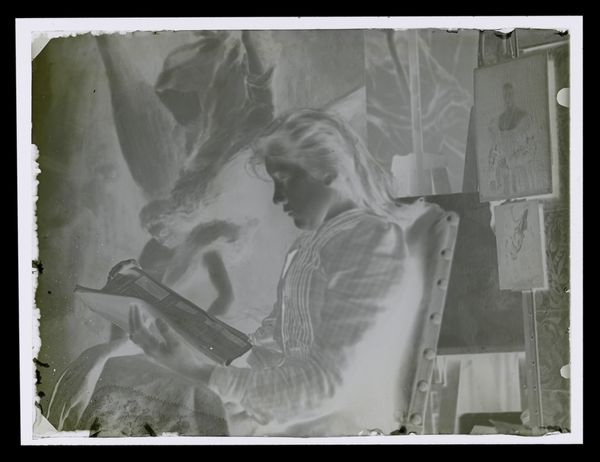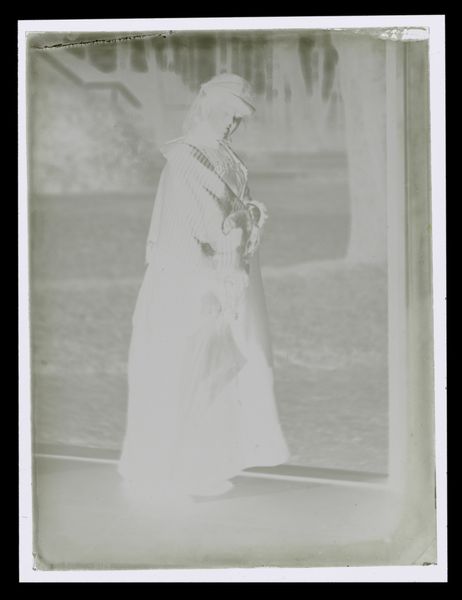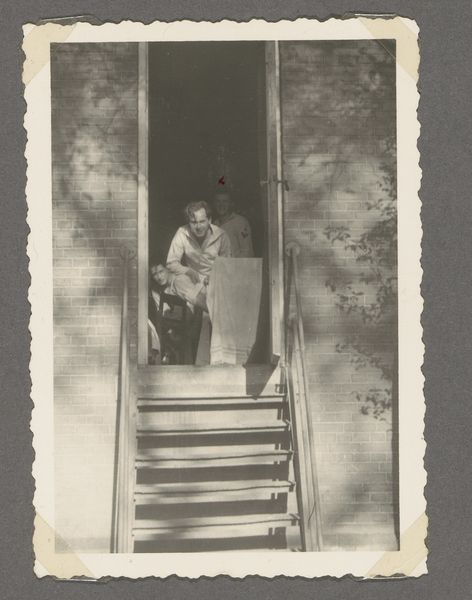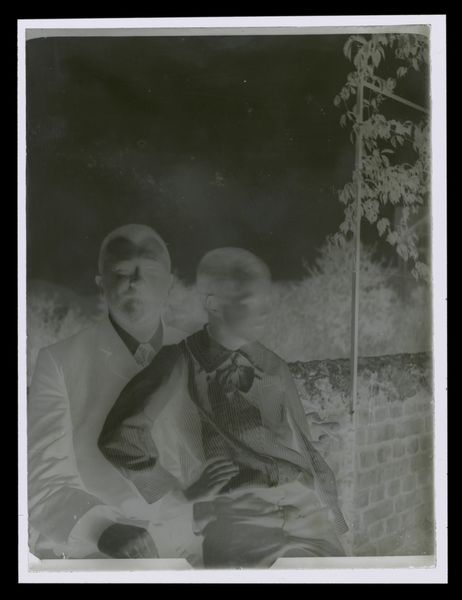
plein-air, photography
#
portrait
#
plein-air
#
photography
Dimensions: height 180 mm, width 130 mm
Copyright: Rijks Museum: Open Domain
Curator: We’re looking at an intriguing photograph, "Meisje in een tuin," which translates to "Girl in a Garden." It's attributed to Laurens Lodewijk Kleijn, created sometime between 1865 and 1900. What are your initial thoughts? Editor: My first impression is ethereal. It feels like a half-faded memory. The image's ghostly quality, combined with what appears to be a child in a light dress, creates this aura of fragility. You can also make out a set of decorative branches. Curator: Indeed. Kleijn's choice of working 'en plein air,' right in the garden, speaks volumes about the shift in artistic practices during that period. The availability of portable photographic equipment enabled this move. It facilitated a different relationship between the subject and their environment. Editor: Right, that immediacy affects its production and circulation. Consider the materials and processes here—the glass plate negative, the specific chemistry involved. Each stage shapes the outcome, it's far from a straightforward capture, but the hand in the manufacturing really elevates this image. Curator: Precisely. And think about how the sitter is presented. This seemingly casual "snapshot" has the social imprint of portraiture. While also speaking to evolving notions of childhood. There is innocence, yes, but also perhaps a hint of performance. Note the detail in the flower pattern on the dress and trim. Editor: I’d add, seeing the girl holding the gardening pail grounds this. It's the little domestic material details like that which suggest an understanding of the labour connected to land, whether the artist recognised that significance. The pail seems disproportionately big for her. Curator: It's easy to get lost in its visual poetry and forget this object’s functionality. Also, the blurred figure on the right could symbolize someone present in the garden but visually withdrawn. Editor: It all comes back to how processes of visibility and representation reflect very tangible practices and materials in this case. Curator: It's true, isn't it? By observing these photographic techniques and the circumstances of production, a story can emerge from a seemingly simple photograph. Editor: It's in decoding the layering of photographic materials that its broader implications unravel. What seems like a moment frozen is the confluence of very material considerations.
Comments
No comments
Be the first to comment and join the conversation on the ultimate creative platform.


